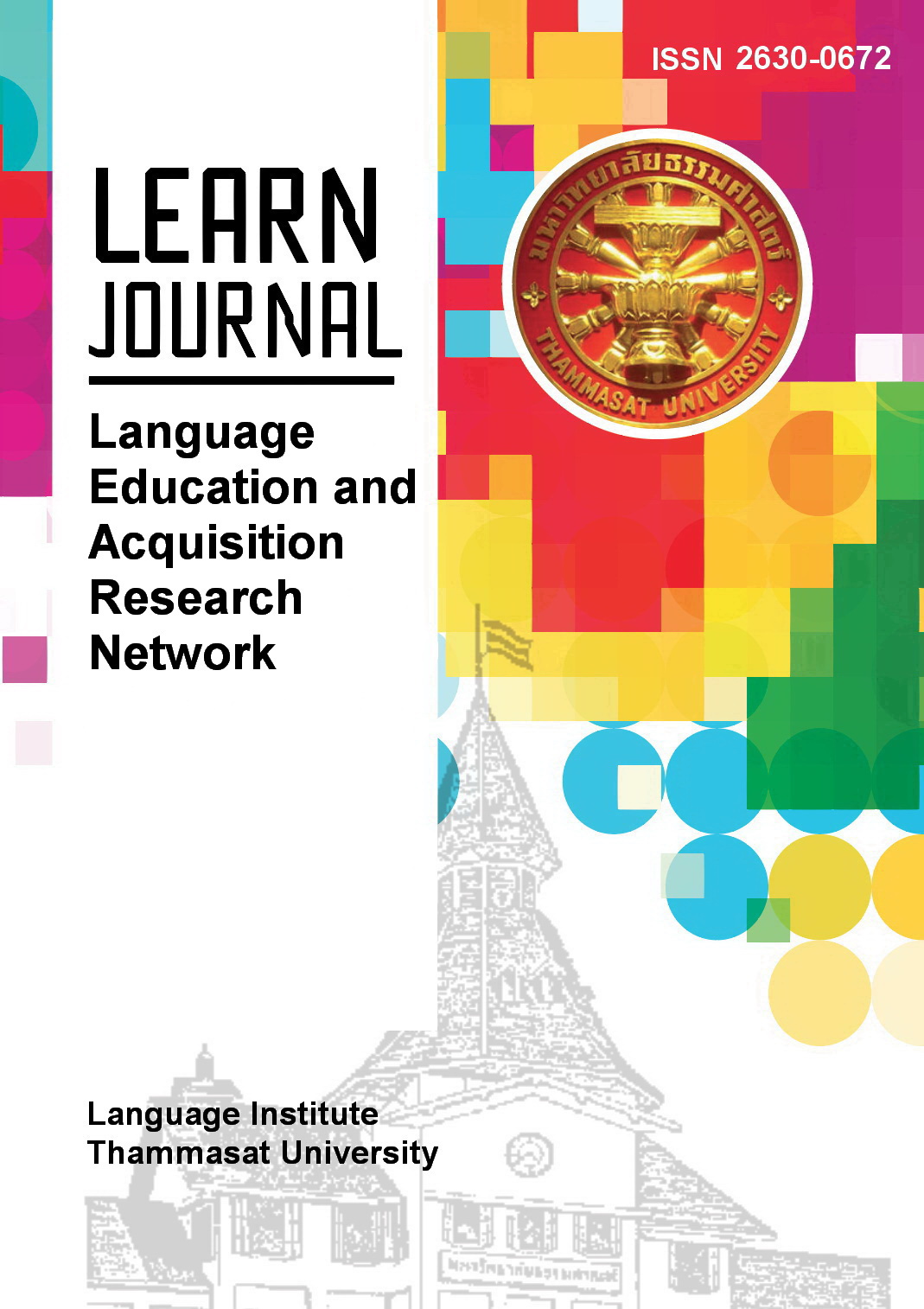Needs Analysis on an English Textbook Entitled English for International Business
Main Article Content
Abstract
Using the framework of CLIL for the content and ESP for the language functions, this research investigated and analyzed the needs of current MA students, MA graduates and prospective employers as the basis for designing a textbook for an elective course entitled English for International Business. The results of a survey of 42 MA students, 48 MA graduates, and 35 prospective employers of MA graduates revealed what topics of international business and what English language functions in writing and speaking needed to be included. Moreover, in-depth interviews were conducted with two MA students, two MA graduates, and four prospective employers of MA graduates to gain a deeper understanding of the responses and the results from the survey data. All in all, the results from the survey and in-depth interviews can enable the writer of the textbook to proceed with the project in a clearer and more specific direction to serve the needs of the stakeholders of this English course offered by the university in the current study.
Article Details
References
Berdie, D. R., Anderson, J. F, and Niebuhr, M. A. (1986). Questionnaires: Design and use. Scarecrow Press.
Brinton, D. M., Snow, M. A., & Wesche, M. (2011). Content-based second language instruction. University of Michigan Press.
Chambers, F. (1980). A re-evaluation of needs analysis in ESP. The ESP Journal, 1(1), 25-33. https://doi.org/10.1016/0272-2380(80)90007-4
Coyle, D., Hood, P., & Marsh, D. (2010). CLIL: Content and language integrated learning. Cambridge University Press.
Coyle, D. (2015). Strengthening integrated learning: Towards a new era for pluriliteracies and intercultural learning. Latin American Journal of Content and Language Integrated Learning, 8(2), 84-103, https://doi.org/10.5294/laclil.2015.8.2.2
Dudley-Evans, T., & St. John, M. J. (1998). Developments in ESP: A multi-disciplinary approach. Cambridge University Press.
Fullan, M., & Langworthy, M. (2014). A rich seam: How new pedagogies find deep learning. Pearson.
Ganti, A. (2021, October 27). Central Limit Theorem (CLT). Investopia. https:// www.investopedia.com>> Financial Analysis
Hutchinson, T; & Waters, A. (1987). English for specific purposes: A learning-centered approach. Cambridge University Press.
Hyland, K. (2007). English for specific purposes: Some influences and impacts. In J. Cummins & C. Davison (Eds.), International handbook of English language teaching (pp. 391-402). Springer.
Munoz-Luna, R. (2014). From drills to CLIL: the paradigmatic and methodological evolution towards the integration of content and foreign language. PROFILE Issues in Teachers’ Professional Development, 16(1), 167-180. https://doi.org/ 10.15446/profile.v16n1.37843
Nunan, D. (1994). The learner-centered curriculum. Cambridge University Press.
Rimkeeratikul, S. (2017). English for import-export business. Thammasat University Press.
Shutz, N. W. & Derwing, B. L. (1981). The problems of needs assessment in English for specific purposes: Some theoretical and practical considerations. In R. Mackay & J. D. Palmer (Eds.), Language for specific purposes program design and evaluation (pp.29-45). Newbury House.
Tomlinson, B. (2009). Paper Presentation at “Methodologies and Materials for teaching Portuguese as a Non-Native Language Conference”, October 29-30, Lisbon, Portugal (pp.45-55).


